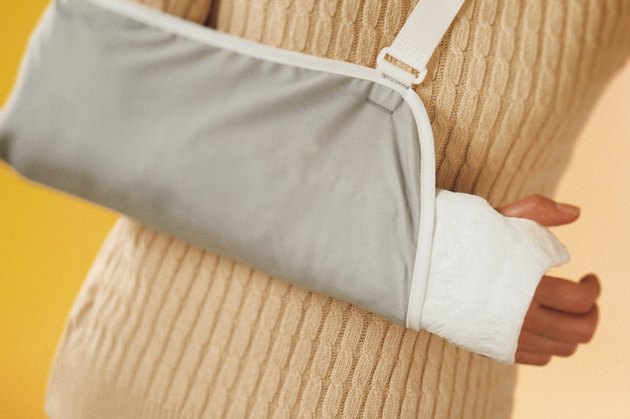How to Use an Arm Sling for a Fractured Shoulder

Auther: Ireland Wolfe (Contributor)
Ireland Wolfe has been writing professionally since 2009, contributing to Toonari Post, Africana Online and Winzer Insurance. She obtained her Bachelor of Arts in psychology and Master of Arts in mental health counseling. She is also a licensed mental health counselor, registered nutritionist and yoga teacher.
It is rare to sustain a broken shoulder blade without severe trauma; however, the clavicle and the proximal humerus are bones that are considered part of the shoulder, and these bones are more commonly fractured. Your doctor will want to immobilize the shoulder by placing your arm in a sling until the bones heal. If you have a fractured shoulder, follow your doctor’s treatment recommendations.
Identification
Shoulder fractures account for one percent of all broken bones, according to the American Academy of Orthopaedic Surgeons. Symptoms of a shoulder fracture include extreme pain when the arm is moved, swelling around the back of the shoulder and skin abrasions. Different parts of the scapula can also become fractured. Your doctor will take an X-ray to determine the extent of your fracture and the proper treatment. In the majority of cases, the scapular body is fractured.
Treatment
In some cases, your fractured shoulder will require surgical intervention. However, the majority of the time, shoulder fractures heal on their own when immobilized. A simple sling often works to keep your shoulder in place. Your doctor will recommend physical therapy to begin range-of-motion exercises within two to four weeks. Complete range of motion can take up to a year to return. Passive stretching and other shoulder exercises can help your shoulder return to full function.
Sling
In many cases, the hospital will provide an arm sling for your shoulder. Keep your elbow bent at a 90-degree angle across your waist. Fasten the strap of the sling behind your neck and gently place your arm in the sling. The elbow should rest comfortably inside the closed end of the sling. Adjust the strap as needed so that you don’t experience unnecessary pain, and make sure your arm remains at a 90-degree angle.
Variations
If you do not have an arm sling, you can make one. Find a piece of cloth that is at least 5 feet wide and 3 feet long. Either cut or fold the cloth into a triangle shape. Place your elbow at the top of the triangle, ensuring that your wrist is along the bottom edge of the triangle. Tie the two edges behind your head, adjusting for height so that your elbow remains at a right angle.
